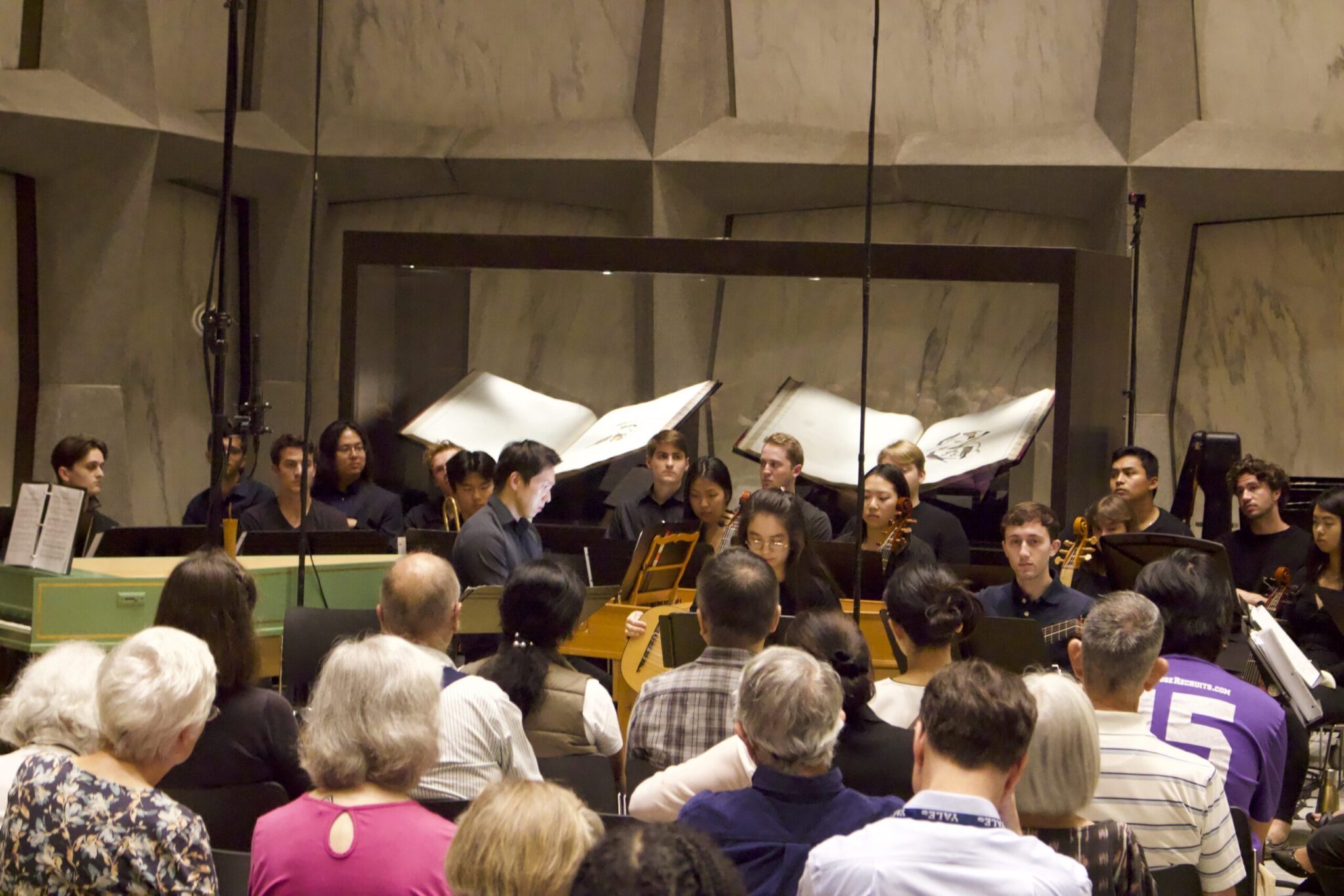Hark! Collegium Musicum performs Elizabethan music at the Beinecke
The Collegium Musicum, Yale’s early music performance group, performed alongside a Philadelphia-based Renaissance wind ensemble this past Wednesday.

Collyn Robinson, Multimedia Managing Editor
The sounds of lutes and harpsichords reverberated through the Beinecke Rare Book and Manuscript Library on Wednesday evening as the Collegium Musicum musical group performed a series of Elizabethan pieces.
The group, formed mostly by members of the class, “The Performance of Early Music,” showcased works by William Byrd, Philip Rosseter and Thomas Weelkes in a “deathiversary” concert and lecture celebrating 400 years since all of their deaths. Performers played instruments from the 17th century, including lutes, harpsichords and the viola de bomba to fully recreate the experience audiences would have had during the rule of Queen Elizabeth I.
“I think [the event] is a really cool opportunity to get a glimpse into the performance, culture and the musical textures and sounds of that period,” said Ava Gaughan ’26, one of the vocalists in the group. “Also, it’s a great way to illustrate the resource that the Beinecke is … If you’re at all interested in medieval books or manuscripts or music of any kind, the fact that collections they have are actual physical objects that you’re able to go and see and touch is amazing.”
Founded by composer Paul Hindemith in 1943, Yale’s Collegium Musicum is one of the longest-running early music groups in the country. The musicians study “performance practice” — the rules and styles of performing early music in a way that accurately reflects the aesthetics of the 12th-18th centuries. Evan Gorelick ’25, a managing editor for the News, is a member of the Collegium Musicum.
Collegium Musicum was also joined by Piffaro, a Renaissance wind ensemble from Philadelphia, giving Yale College students the opportunity to rehearse with and learn from professionals in the world of early music.
Grant Herried, director of the Collegium Musicum and professor of the class, selected composers that were “riding the crest of artistic expression that Elizabeth I fostered in her court,” he said.
Byrd, Rosseter and Weelkes all passed away in 1623, which Herried said signaled the culmination of the Elizabethan era of music.
The group is supported by the Beinecke library as well, as the library provided both a space to perform in addition to the source material. Herried transcribed and translated original copies of sheet music into modern music notation for his students.
“[Early music] is interesting for me because, unlike playing a classical instrument, the field of early music is much more open to improvisation and detective work,” said Herried.
Learning early music is also about adapting to unfamiliar physical forms of familiar instruments, Herried said. For example, he said that one trumpet player in the class was given a recorder to play. Using period instruments helps to contextualize the works for students and audiences, Herried told the News.
Gaughan and Yixiao Zhang ’26 said they were excited about this performance as a chance to highlight vocalists in particular.
“Polyphony, the style that most early music employs, was built off of sacred chant,” Gaughan said. “That really centers the voice as the central instrument of the music.”
In the Collegium Musicum, the choir is divided into four-part polyphony. Each group has both its own melody and unique harmonies with the other parts, creating a mystifying effect through a mathematical approach to music.
Zhang spoke with the News about the importance of lyricism while performing Elizabethan music in the modern age. He said that a large premise of early musicianship is “music as its own language,” without having to understand the lyrics.
The group members told the News that they were particularly excited to take part in a performance that was more of a “historical reenactment,” as Gaughan described it.
“Early music is something well worth knowing about,” Herried said. “The expression [it] achieves in human emotions and relationships is unparalleled,”
Paul Hindemith led the group through 12 performances from 1943 to 1953.







